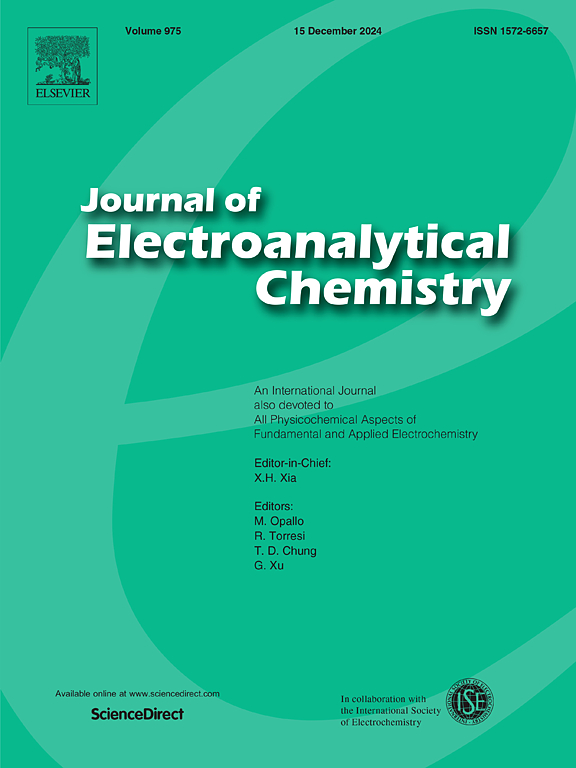Enhancement of critical current density using micro-porous structure in a low-temperature water electrolysis
IF 4.1
3区 化学
Q1 CHEMISTRY, ANALYTICAL
引用次数: 0
Abstract
The critical current density (CCD), which limits the hydrogen production rate was measured by forming micro-porous structures on the cathode electrode in a low-temperature water electrolysis. Several micro-porous structures were formed by the electrodeposition method varying the current density during the deposition. A maximum 54% enhancement of the CCD was recorded compared to the plain surface. With the micro-porous structures, the superior capillary wicking effect allowed the electrolyte to penetrate the structure, resulting in the increased number of hydrogen nucleation sites. The increased hydrogen nucleation sites led to the decreased hydrogen bubble size and increased departed bubble density, which delayed formation of the hydrogen film leading to the CCD. The surface morphology revealed that the multiple pore layers with the interconnected pores exhibited superior capillary wicking effect compared to the open type single pore layer. It is expected that the results of present work stimulate further research regarding electrode surface design in the low-temperature water electrolysis.
在低温水电解中利用微多孔结构提高临界电流密度
通过在低温水电解的阴极电极上形成微孔结构,测量了限制氢气生产率的临界电流密度(CCD)。通过在沉积过程中改变电流密度的电沉积方法,形成了多种微孔结构。与普通表面相比,CCD 最多增强了 54%。在微孔结构中,优异的毛细管吸附效应使电解质能够渗透到结构中,从而增加了氢成核点的数量。氢成核点的增加导致氢气泡尺寸减小,离去气泡密度增加,从而延迟了氢膜的形成,导致 CCD 的形成。表面形态显示,与开放型单孔层相比,孔隙相互连接的多孔层表现出更优越的毛细管吸湿效果。本研究的结果有望进一步推动低温水电解电极表面设计方面的研究。
本文章由计算机程序翻译,如有差异,请以英文原文为准。
求助全文
约1分钟内获得全文
求助全文
来源期刊
CiteScore
7.80
自引率
6.70%
发文量
912
审稿时长
2.4 months
期刊介绍:
The Journal of Electroanalytical Chemistry is the foremost international journal devoted to the interdisciplinary subject of electrochemistry in all its aspects, theoretical as well as applied.
Electrochemistry is a wide ranging area that is in a state of continuous evolution. Rather than compiling a long list of topics covered by the Journal, the editors would like to draw particular attention to the key issues of novelty, topicality and quality. Papers should present new and interesting electrochemical science in a way that is accessible to the reader. The presentation and discussion should be at a level that is consistent with the international status of the Journal. Reports describing the application of well-established techniques to problems that are essentially technical will not be accepted. Similarly, papers that report observations but fail to provide adequate interpretation will be rejected by the Editors. Papers dealing with technical electrochemistry should be submitted to other specialist journals unless the authors can show that their work provides substantially new insights into electrochemical processes.

 求助内容:
求助内容: 应助结果提醒方式:
应助结果提醒方式:


